Abstract
Four methods of determining the concentration of mercury in human urine have been studied. A simple method suitable for general laboratory use is recommended and the requirements for accurate results are defined. The method employs mild oxidation with permanganate and HS2O4 followed by dithizone extraction and measurement of absorbance at 485 nm and 620 nm.
No mercury was detected in any of 74 urines from unexposed laboratory controls and hospital patients. A random urine sample seems adequate for the investigation of clinical or industrial mercury poisoning. Two individuals, free of symptoms, but subjected to moderate exposure, excreted 3·0-9·7 μg of mercury per 100 ml of urine.
After the administration of an organic mercurial to two volunteers, urinary excretion was rapid and virtually complete within 48 hours.
Full text
PDF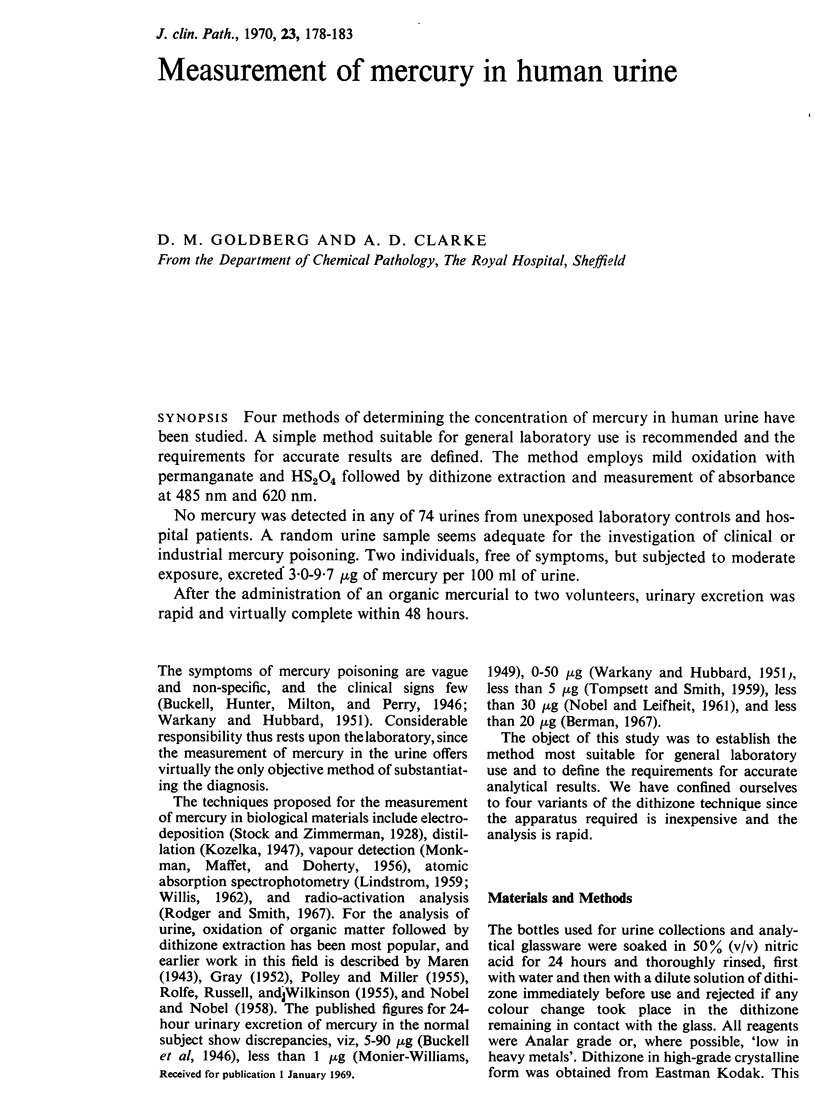
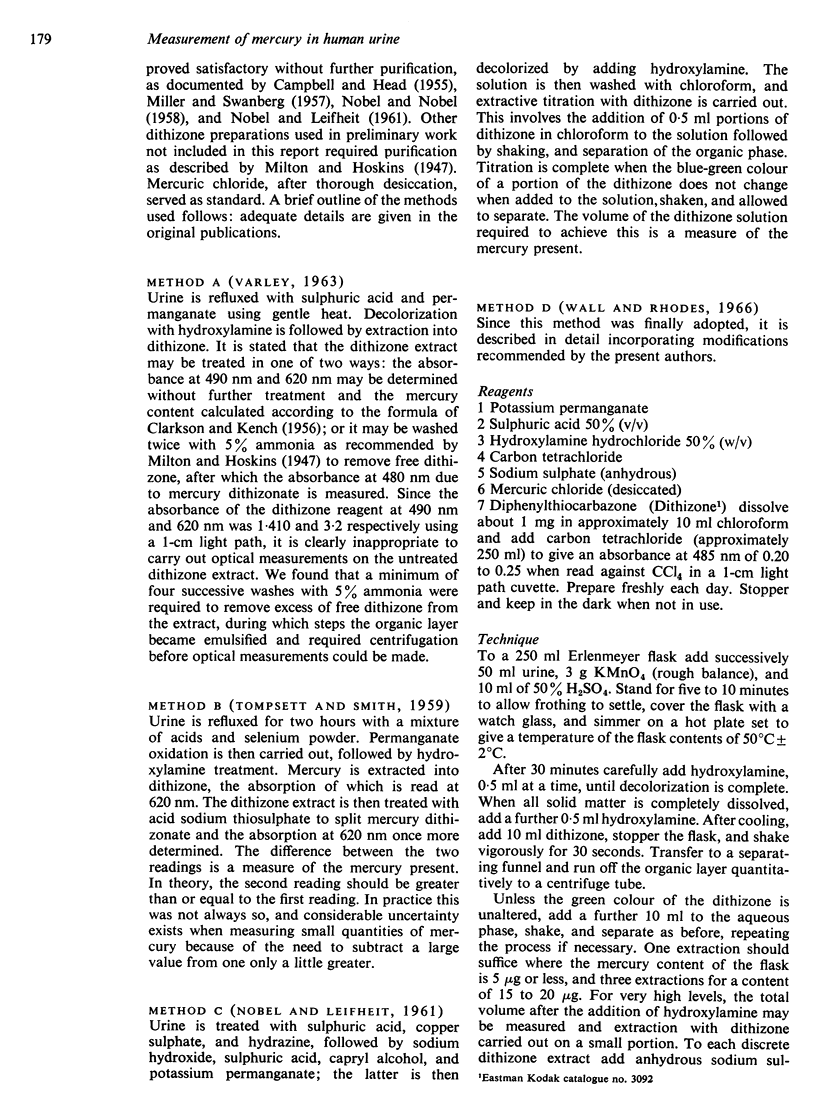
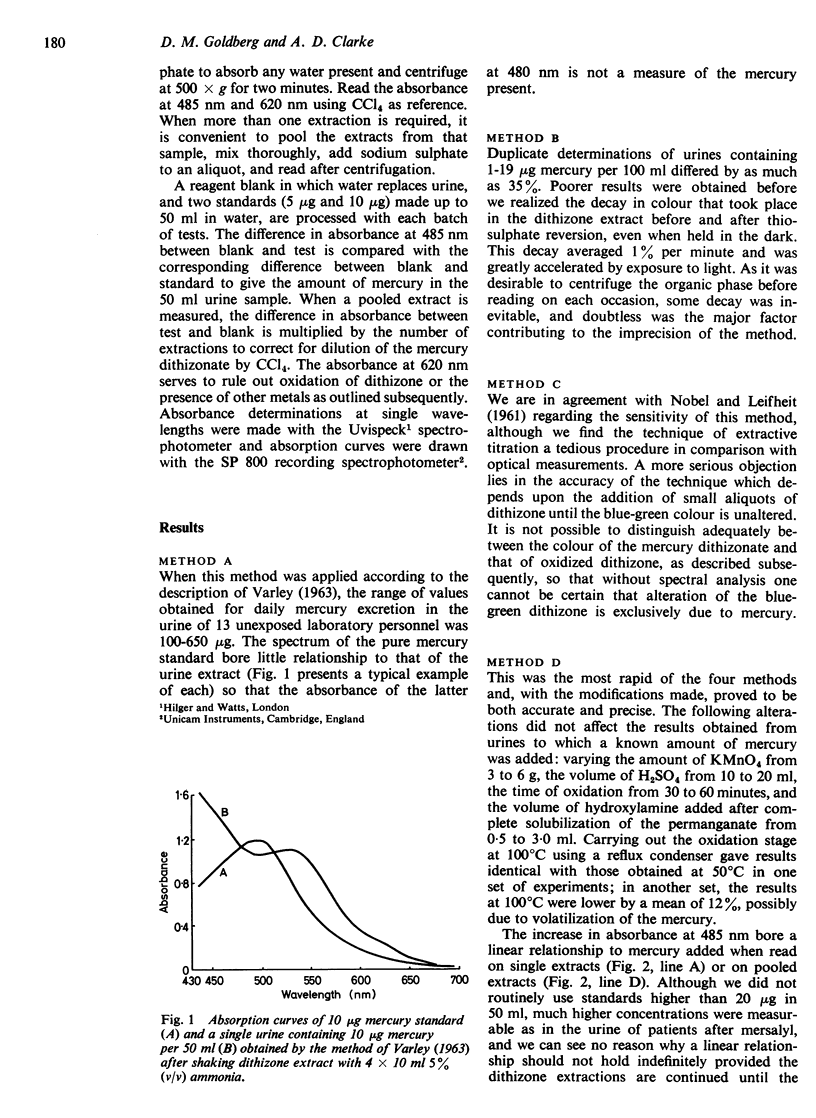
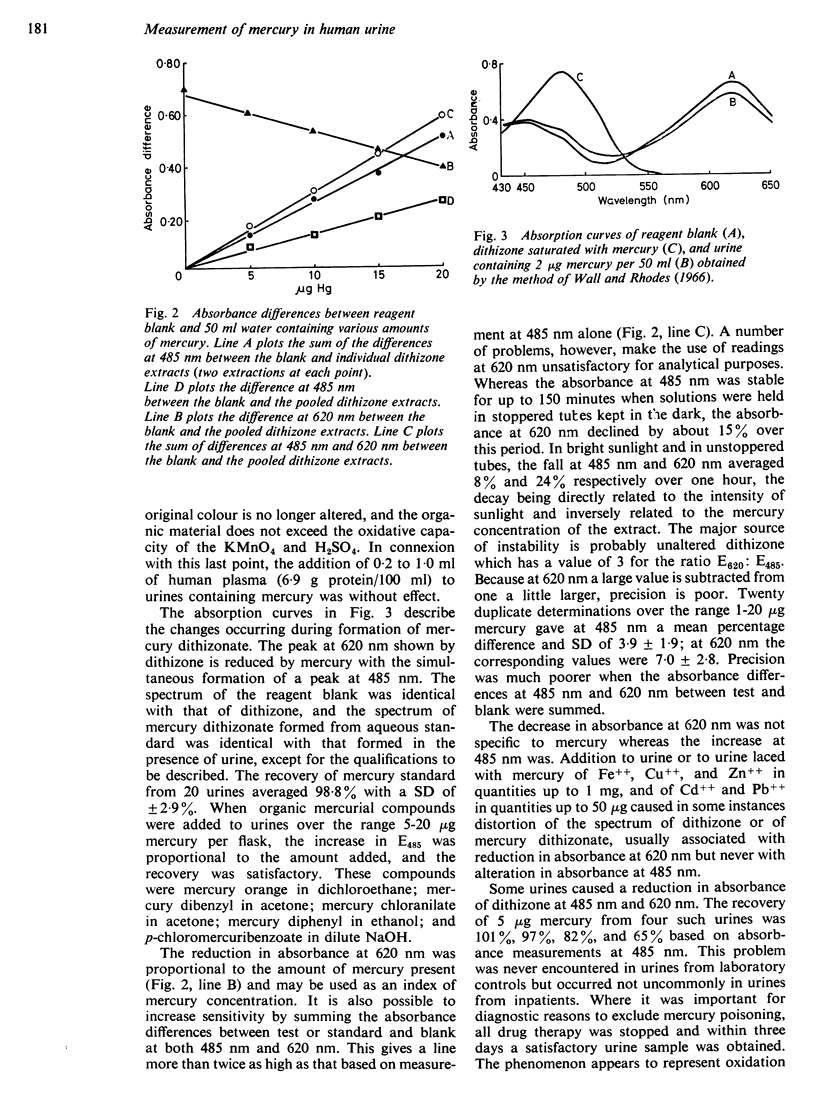
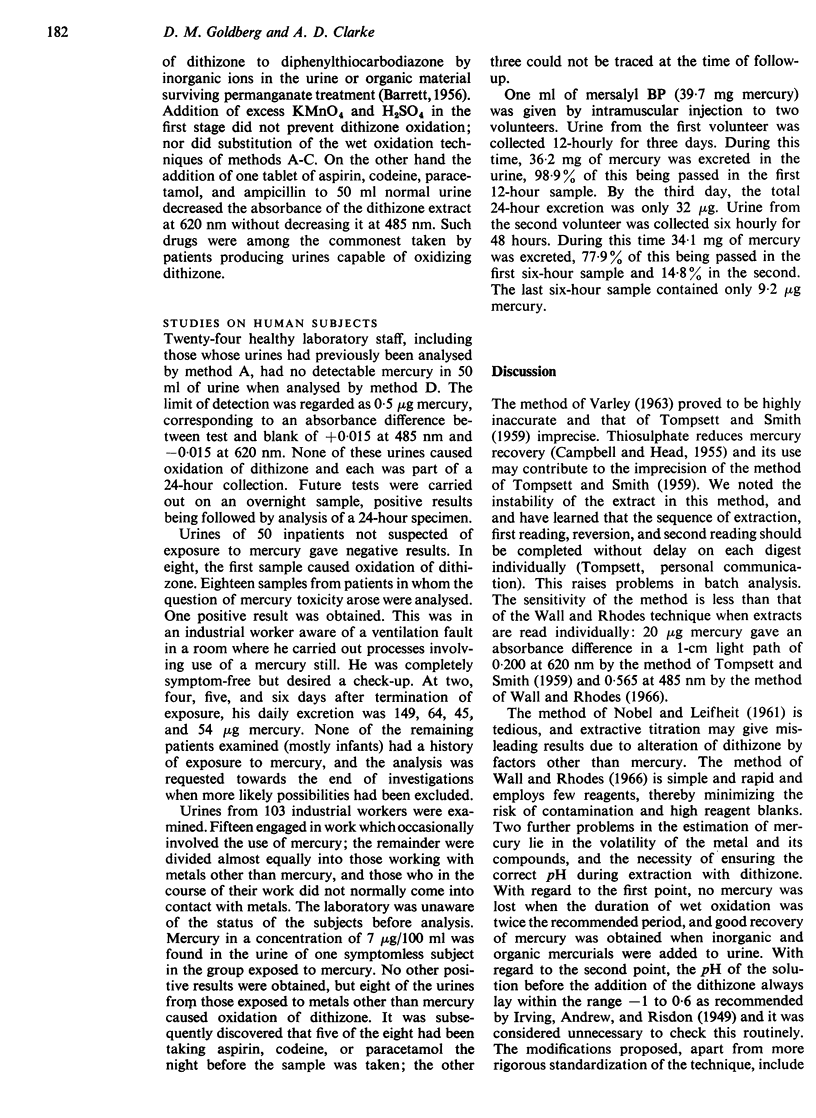
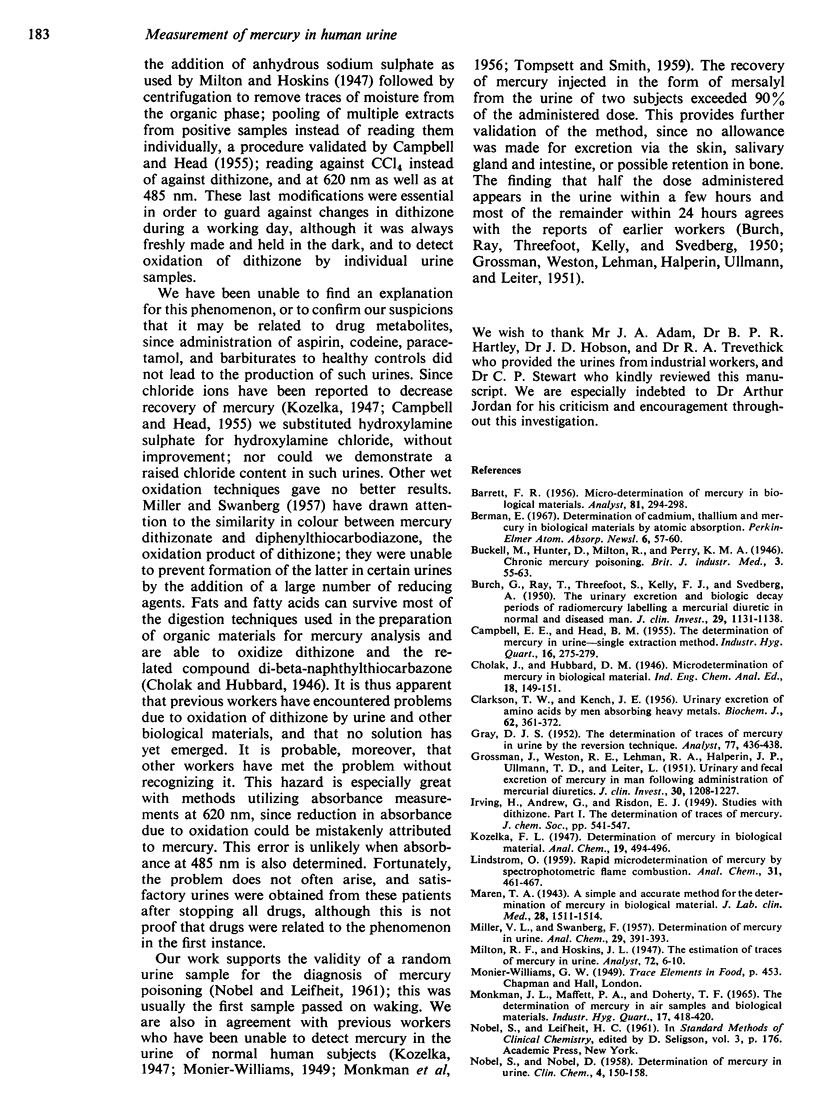
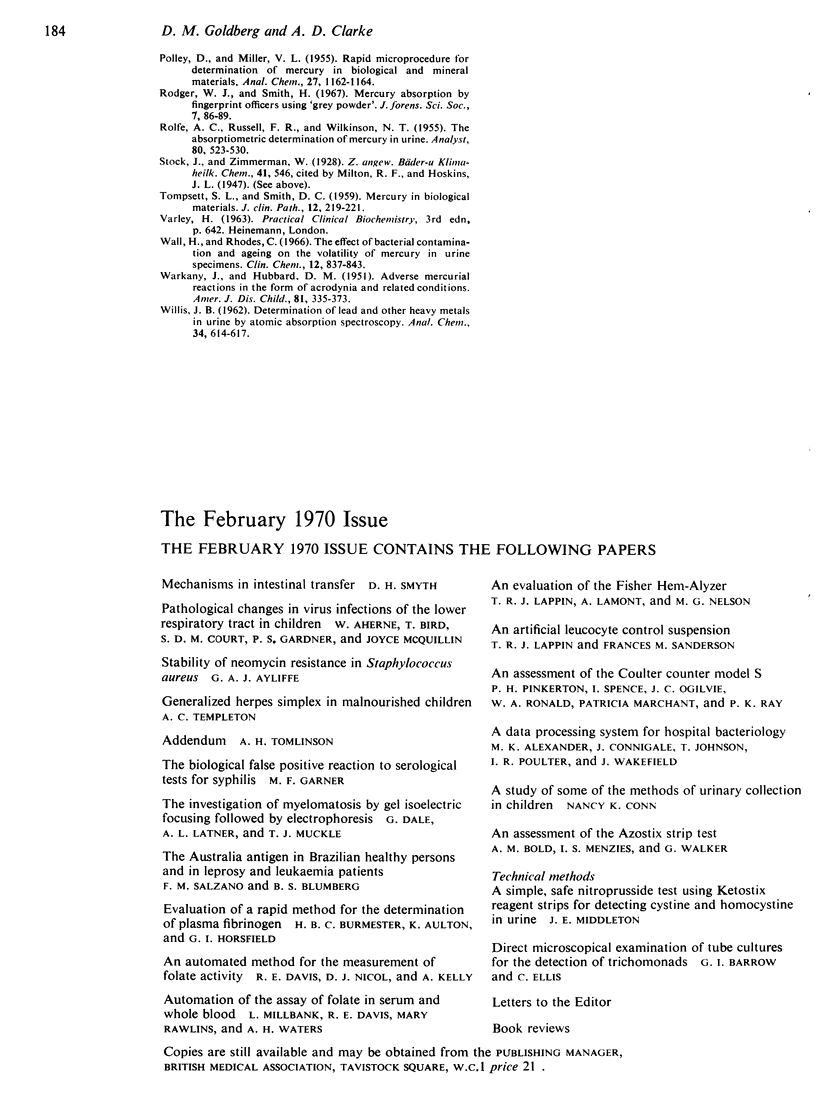
Selected References
These references are in PubMed. This may not be the complete list of references from this article.
- BURCH G., RAY T., THREEFOOT S., KELLY F. J., SVEDBERG A. The urinary excretion and biologic decay periods of radiomercury labeling a mercurial diuretic in normal and diseased man. J Clin Invest. 1950 Sep;29(9):1131–1138. doi: 10.1172/JCI102350. [DOI] [PMC free article] [PubMed] [Google Scholar]
- CAMPBELL E. E., HEAD B. M. The determination of mercury in urine; single extraction method. Am Ind Hyg Assoc Q. 1955 Dec;16(4):275–279. doi: 10.1080/00968205509344338. [DOI] [PubMed] [Google Scholar]
- CLARKSON T. W., KENCH J. E. Urinary excretion of amino acids by men absorbing heavy metals. Biochem J. 1956 Mar;62(3):361–372. doi: 10.1042/bj0620361. [DOI] [PMC free article] [PubMed] [Google Scholar]
- DOHERTY T. F., MAFFETT P. A., MONKMAN J. L. The determination of mercury in air samples and biological materials. Am Ind Hyg Assoc Q. 1956 Dec;17(4):418–420. doi: 10.1080/00968205609344445. [DOI] [PubMed] [Google Scholar]
- GROSSMAN J., WESTON R. E., LEHMAN R. A., HALPERIN J. P., ULLMANN T. D., LEITER L. Urinary and fecal excretion of mercury in man following administration of mercurial diuretics. J Clin Invest. 1951 Nov;30(11):1208–1220. doi: 10.1172/JCI102540. [DOI] [PMC free article] [PubMed] [Google Scholar]
- NOBEL S., NOBEL D. Determination of mercury in urine. Clin Chem. 1958 Apr;4(2):150–158. [PubMed] [Google Scholar]
- TOMPSETT S. L., SMITH D. C. Mercury in biological materials. J Clin Pathol. 1959 May;12(3):219–221. doi: 10.1136/jcp.12.3.219. [DOI] [PMC free article] [PubMed] [Google Scholar]
- WARKANY J., HUBBARD D. M. Adverse mercurial reactions in the form of acrodynia and related conditions. AMA Am J Dis Child. 1951 Mar;81(3):335–373. doi: 10.1001/archpedi.1951.02040030345004. [DOI] [PubMed] [Google Scholar]
- Wall H., Rhodes C. The effect of bacterial contamination and aging on the volatility of mercury in urine specimens. Clin Chem. 1966 Dec;12(12):837–843. [PubMed] [Google Scholar]


